Lift Off to Cesium Mars
Last year, Cesium released the first readily accessible, comprehensive 3D Tileset of the Moon. Today, we are excited to introduce Cesium Mars. Cesium Mars is a 3D Tileset to enable developers, researchers, and mission planners to create visualizations and simulations of the Red Planet.
Cesium Mars comprises precise terrain captured by NASA and the European Space Agency (ESA), paired with colorized imagery. Cesium Mars is provided as 3D Tiles, the Open Geospatial Consortium (OGC) community standard created by Cesium.
Enabling a digital ecosystem for planetary data
A wealth of Mars data has already been captured by orbital and rover missions. The seven man-made satellites from five space agencies currently orbiting Mars and the two active rovers on Mars, NASA's Curiosity and Perseverance, send home more data every day through the Mars Relay Network. In addition, two space agencies are actively planning manned missions to Mars, and several additional agencies are planning for continued robotic exploration and orbital analysis. Cesium Mars lowers the barrier to entry for studying existing and new Mars data and for leveraging this ever-increasing data as part of the planning, execution, and analysis for Mars programs. A precise, easily accessed model of Mars supports the space community in its efforts toward an open, interoperable platform for a digital ecosystem supporting data captured beyond Earth.
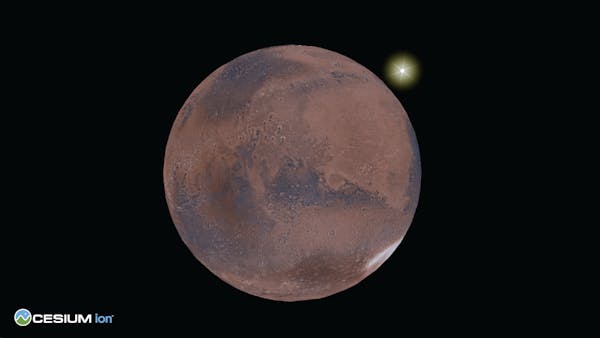
Mars viewed from space. Data for Cesium Mars from the Mars Orbiter Laser Altimeter (MOLA) on the NASA Mars Global Surveyor (MGS) and the High-Resolution Stereo Camera (HRSC) on the ESA Mars Express.
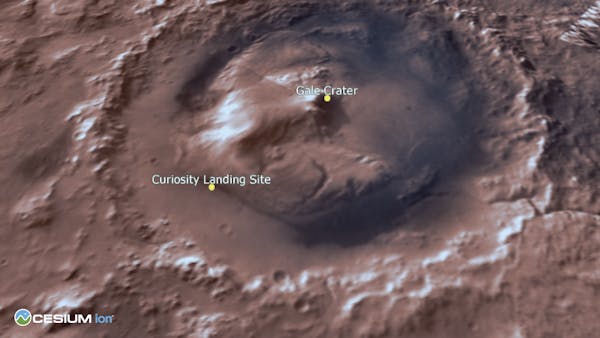
The Gale Crater, visualized with Cesium Mars.
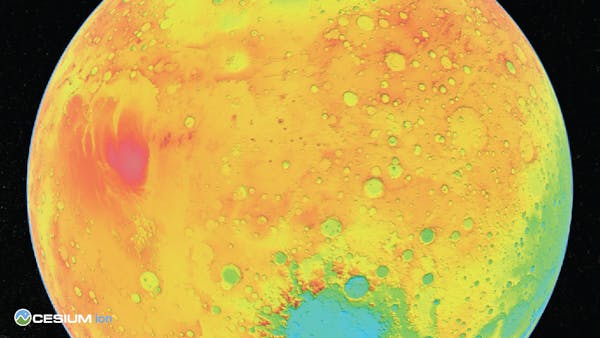
Cesium Mars draped with a Mars MOLA elevation map from NASA's Scientific Visualization Studio.
The launch of Cesium Mars comes at the right time when there's a need for planetary-scale digital twins and simulation for the next leap in human and robotic spaceflight. Buendea intends to leverage Cesium Mars within NASA’s XR Operations Support System (XOSS) to expand our digital twin environments beyond the Moon and into Mars. By combining Cesium’s geospatial platform with our high-fidelity interactive environments in Unreal Engine, we are creating a foundation for next-generation mission planning, astronaut training, and real-time operations in support of these efforts.
—Julian Reyes, founder of Buendea
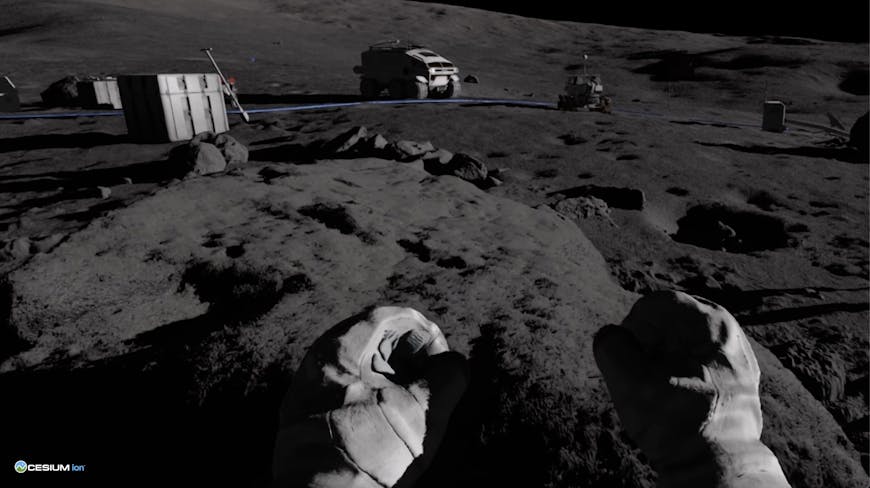
Cesium Moon in XOSS in VR mode. Courtesy Buendea and NASA’s Advanced Operations Concepts Lab.
Since Cesium Moon’s release, the dataset has become a foundation for digital twins for mission planning, for training simulators, and for games. We anticipate similar uses for Cesium Mars.
Space architects designing for the Moon and Mars are already employing workflows like those used for infrastructure on Earth. Cesium Mars enables those processes to converge, as users leverage functionality available for our open source runtime engines. Use Cesium Mars as a base layer to place models of habitats, vehicles, or rovers on the Martian surface. If you have your own high-resolution terrain data, clip and inset it so your projects can live within a single continuous 3D surface rather than multiple separate project areas. Share realistic, interactive 3D design visualizations with large, dispersed teams to facilitate review, highlight design alternatives, and present designs as they change over time.
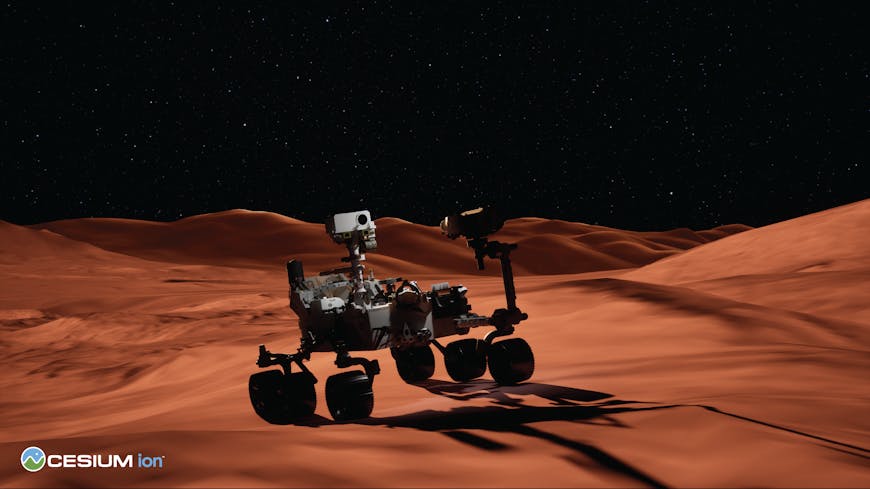
NASA’s Perseverance rover on Mars, viewed with Cesium for Unreal in Unreal Engine.
Building with Cesium Mars
Cesium Mars is provided as 3D Tiles using the IAU_2015:49901 CRS and is composed of the Mars Viking Colorized Global Mosaic 232m imagery and Mars MGS MOLA - MEX HRSC Blended DEM Global 200m for terrain, along with higher resolution data for the Jezero and Gale craters. Cesium’s visualization engines—CesiumJS, Cesium for Unreal, Cesium for Unity, and Cesium for Omniverse—are ready for you to start building with Cesium Mars using an accurate representation of the planetary ellipsoid for measurement and analysis. Cesium Mars is available via Cesium ion SaaS and Cesium ion Self-Hosted.
This CesiumJS Sandcastle provides an example of how to include Cesium Mars in a web app. A sample level in Cesium for Unreal provides an example for how to get started with development using Cesium Mars in Unreal Engine.
Lifting off
As lunar and interplanetary missions proceed, the need for an open, interoperable, standards-based platform to support simulation, planning, and analysis has never been greater. Cesium Mars, along with Cesium Moon, is a step toward this vision, offering a precise and scalable foundation.
To access Cesium Mars, sign up or sign in to Cesium ion, locate the asset in the Cesium ion Asset Depot, and add the tileset to your Asset Library. Then start building! Create Cesium Stories, incorporate the data into a CesiumJS web app, or build advanced visualizations with 3D creation engines such as Unreal Engine.